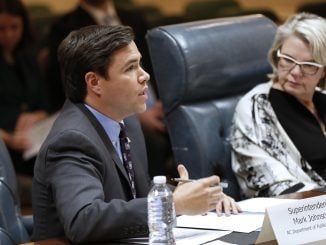
In the national and state battles over whether our schools should include critical race theory — the idea that race defines each of us as oppressor or oppressed — the greatest fight right now began in the U.S. Department of Education, which seeks to hijack civic education programs for this divisive ideology.
Last month, this department proposed a new rule in which critical race theory would become a priority in grant competitions for these programs. When we looked at the rule, we found much more than critical theory to challenge.
First of all, this rule is a wedge that will eventually lead to Common Core-type pressure on all schools to adopt critical race theory at all grade levels. We all know how a suggestion becomes an incentive and then a requirement.
Next, three dozen U.S. senators wrote the agency, stating that the rule is based on divisive and discredited sources. We agree. Most of all, these sources include the 1619 Project, which redefines the American story as hopelessly, thoroughly racist ever since the first slaves were brought to Virginia (and not counting the slaves in Spanish Florida for the previous hundred years).
The narrative also is based on professor Ibram Kendi’s book, “How to Be an Antiracist,” in support of “anti-racist practices.” Yet this book explains that such practices consist of new discrimination on the basis of race as the “only” way to incorporate antiracist practices.
Following this version of antiracism would violate basic civil rights.
But this is far from the only problem in the new rule.
For one thing, the rule fails by the Biden administration’s own standards of inclusion. On his first day, President Biden issued an executive order on Advancing Racial Equity and Support for Underserved Communities. Race features strongly, but it identifies many additional groups as “underserved.” These include rural communities, but the new rule shows no interest in, say, disconnected areas of Appalachia.
Race features strongly, but it identifies many additional groups as “underserved.” These include rural communities, but the new rule shows no interest in, say, disconnected areas of Appalachia.
Moreover, the rule is unworkable in practice. It is self-contradictory. One part insists on teaching “systemic marginalization, biases, inequities, and discriminatory policy and practice in American history.” But how then can this divisive teaching also “validate” all students after telling a majority of them that they and their ancestors are part of the oppressor class?
Besides, these terms are hopelessly vague. There is no definition of any of these terms in the rule. When it comes time to score applicants, graders will bring their own biases and will not grade equitably across grading teams.
Unlike the rules for other competitions, the new rule offers zero guidance on high-quality research into pedagogy that actually helps rather than hurts. Kendi’s brand of antiracism has not been rigorously tested in classrooms, and it seems likely that teaching based on his ideas will further divide Americans. If something out there does work, the Department of Education doesn’t tell us.
Making our children guinea pigs with government funding is a bad idea.
Finally, the rule fails to account for different age and developmental levels among students. Elementary school students barely understand what the media even is, yet applicants must address how projects would encourage students “to critically analyze the diverse perspectives of historical and contemporary media and its impacts.” Even middle school students commonly do not have the background for this.
To simply indoctrinate students with a pre-approved critical analysis, which is what would more likely happen, will thwart genuine critical analysis by students.
The rule is divisive and unworkable. It has become an embarrassment and a distraction to the Biden administration.



